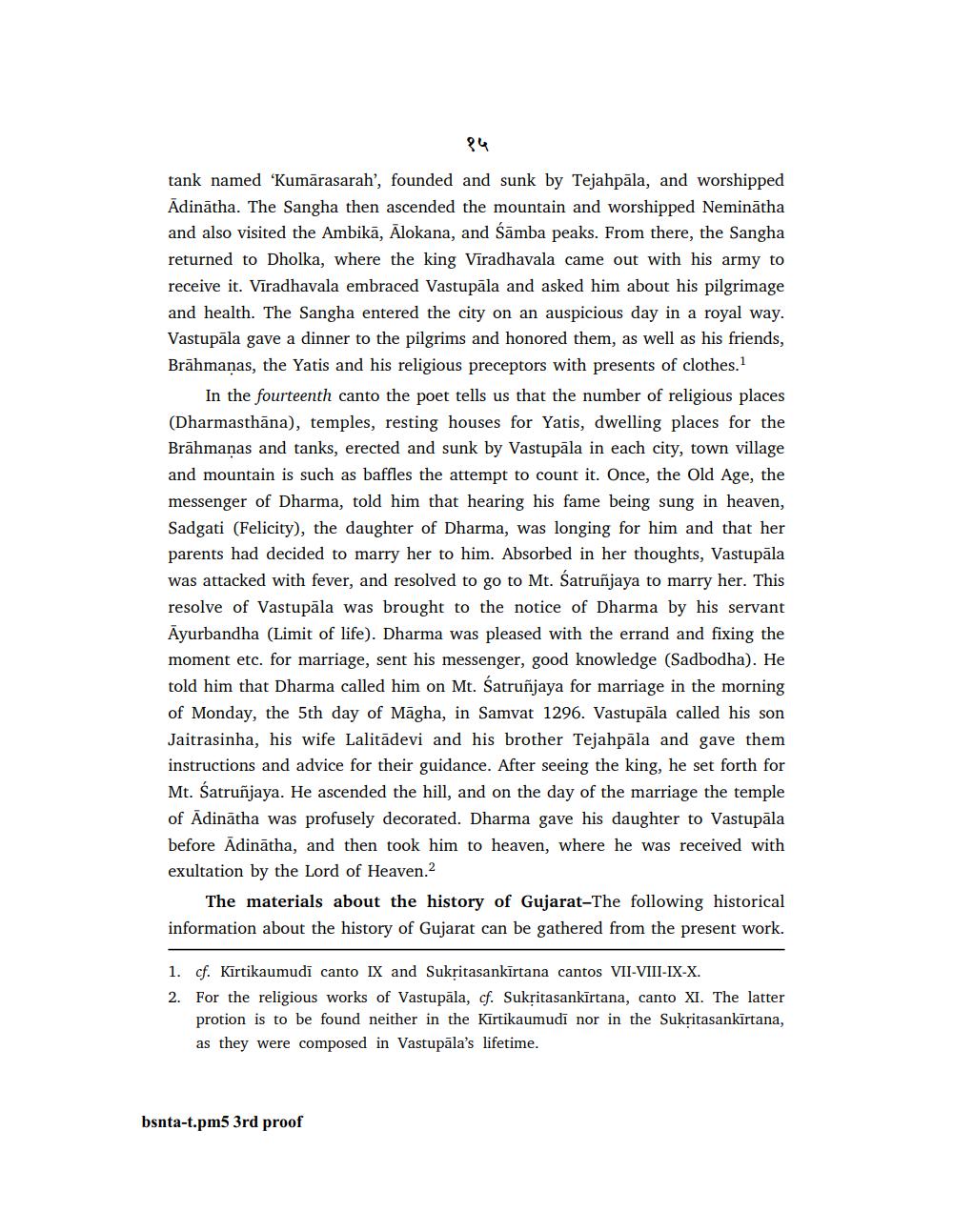________________
१५
tank named 'Kumārasarah', founded and sunk by Tejahpāla, and worshipped Adinātha. The Sangha then ascended the mountain and worshipped Neminātha and also visited the Ambikā, Alokana, and Samba peaks. From there, the Sangha returned to Dholka, where the king Viradhavala came out with his army to receive it. Viradhavala embraced Vastupāla and asked him about his pilgrimage and health. The Sangha entered the city on an auspicious day in a royal way. Vastupāla gave a dinner to the pilgrims and honored them, as well as his friends, Brāhmanas, the Yatis and his religious preceptors with presents of clothes.
In the fourteenth canto the poet tells us that the number of religious places (Dharmasthāna), temples, resting houses for Yatis, dwelling places for the Brāhmanas and tanks, erected and sunk by Vastupāla in each city, town village and mountain is such as baffles the attempt to count it. Once, the Old Age, the messenger of Dharma, told him that hearing his fame being sung in heaven, Sadgati (Felicity), the daughter of Dharma, was longing for him and that her parents had decided to marry her to him. Absorbed in her thoughts, Vastupāla was attacked with fever, and resolved to go to Mt. Satruñjaya to marry her. This resolve of Vastupāla was brought to the notice of Dharma by his servant Ayurbandha (Limit of life). Dharma was pleased with the errand and fixing the moment etc. for marriage, sent his messenger, good knowledge (Sadbodha). He told him that Dharma called him on Mt. Satruñjaya for marriage in the morning of Monday, the 5th day of Māgha, in Samvat 1296. Vastupāla called his son Jaitrasinha, his wife Lalitādevi and his brother Tejahpāla and gave them instructions and advice for their guidance. After seeing the king, he set forth for Mt. Satruñjaya. He ascended the hill, and on the day of the marriage the temple of Adinātha was profusely decorated. Dharma gave his daughter to Vastupāla before Ādinātha, and then took him to heaven, where he was received with exultation by the Lord of Heaven.2
The materials about the history of Gujarat-The following historical information about the history of Gujarat can be gathered from the present work.
1. cf. Kirtikaumudi canto IX and Sukritasankīrtana cantos VII-VIII-IX-X. 2. For the religious works of Vastupāla, cf. Sukritasankīrtana, canto XI. The latter
protion is to be found neither in the Kirtikaumudi nor in the Sukritasankīrtana, as they were composed in Vastupāla's lifetime.
bsnta-t.pm5 3rd proof




